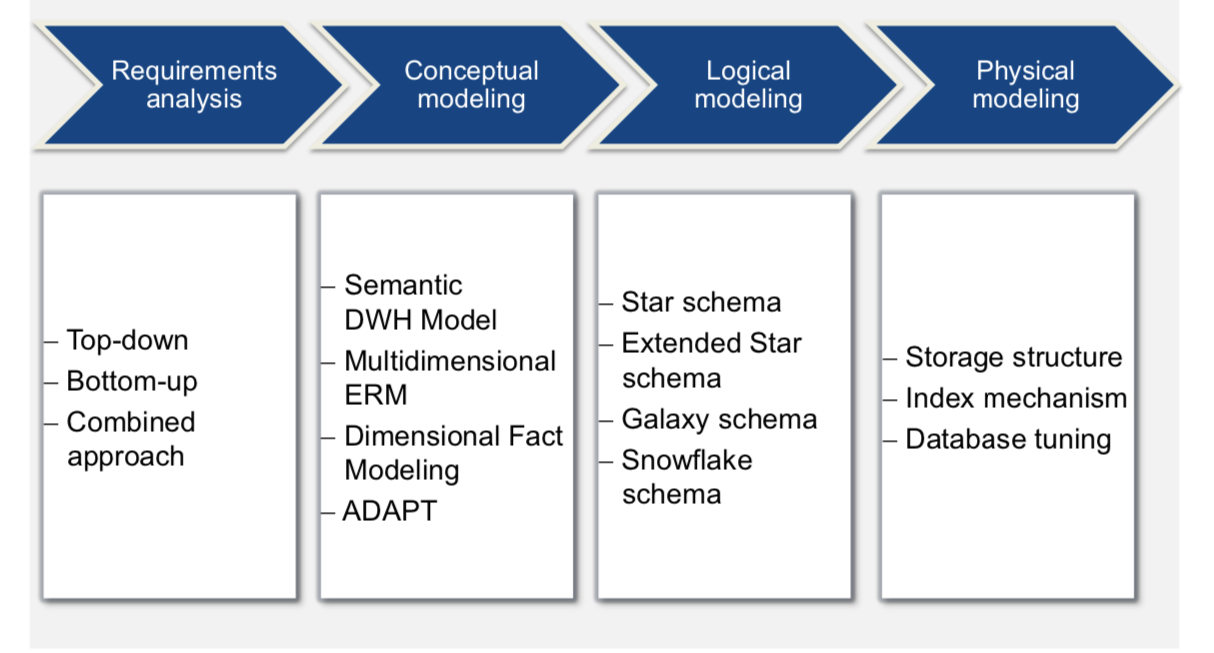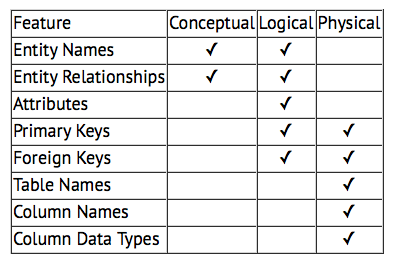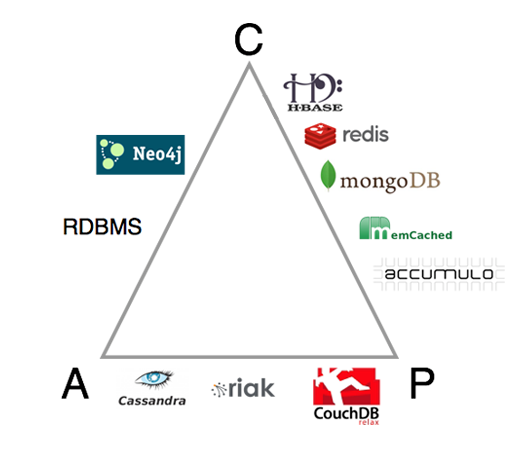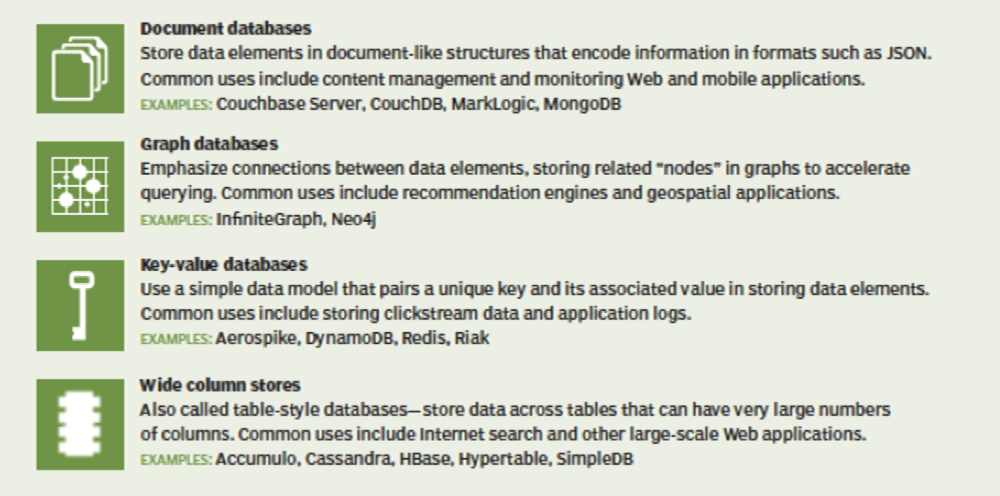Database Design
Data modeling
- Data model is an abstraction that organizes elements of data and how they will relate to each other.
- Data modeling helps in the visual representation of data and enforces business rules, regulatory compliances, and government policies on the data.
- The process of creating data models for information systems.
- An important skill for anyone involved in the process of using and analyzing data.
- More about how to structure data to be used by different stakeholders.
- Do not join four tables just to send one email.
- Advantages:
- Helps common understanding of business data elements and requirements.
- Provides foundation for designing a database.
- Facilitates avoidance of data redundancy and data & business transaction inconsistency.
- Facilitates data re-use and sharing.
- Decreases development and maintenance time and cost.
- Confirms a logical process model and helps impact analysis.
- Data model provides a clear picture of the data organization:
- Simple queries might become complicated if data modeling isn't well thought out.
- Begin prior to building out application, business logic, and analytical models.
- Data modeling is an iterative process:
- Data engineers continually reorganize, restructure, and optimize data models to fit the needs.
- The process is iterative as new requirements and data are introduced.
- Conceptual, logical and physical data model
- Data Modeling vs. Database Design (1996, but it's gold)


Conceptional schema
- The data requirements are initially recorded as a conceptual data model which is essentially a set of technology independent specifications about the data and is used to discuss initial requirements with the business stakeholders.
- Defines WHAT the system should contain.
- High-level, static business structures and concepts
- Conceptual ERD models reflect information gathered from business requirements.
- Typically created by Data Architects, Business Analysts and stakeholders with ERD or other UML.
- Learn more about Conceptual Modeling
Logical schema
- The conceptual model is then translated into a logical data model, which documents structures of the data that can be implemented in databases.
- One conceptual data model may require multiple logical data models.
- Conceptional and logical schemas are sometimes implemented as one and the same.
- Logical Data Models (LDMs) define HOW the system should be implemented regardless of the DBMS.
- Entity types, data attributes and relationships between entities
- Has to aid business analysis, not the database creation.
- Typically created by Data Architects and Business Analysts with ERD or other UML.
Physical schema
- The last step in data modeling is transforming the logical data model to a physical data model that organizes the data into tables, and accounts for access, performance and storage details.
- Physical Data Models (PDMs) define HOW the system should be implemented using a specific DBMS system.
- The internal schema database design
- The target implementation technology may be a RDBMS, an XML document, or a NoSQL database.
- Can use DDL statements to deploy the database server.
- Typically created by DBA and developers.
Databases
- Database is a set of related data and the way it is organized.
- Database Management System (DBMS) is a software for storage, retrieval, and updating of data.
- Database is often used to refer to both the database and the DBMS.
CAP Theorem
- States that it is impossible for a distributed data store to simultaneously provide more than two out of the following three guarantees:
- Consistency (C, ACID guarantees): All read requests should receive the latest value (or error)
- Availability (A, BASE philosophy): All requests should return successfully.
- Partition tolerance (P): The system can tolerate arbitrary number of communication failures.
- Since no distributed system is safe from network failures, partition tolerance is mandatory.
- Consistency: Return an error if particular version cannot be guaranteed to be up to date.
- Availability: Always process the query and return the most recent available version.
- When there are no network partitions, every system can behave like CA.
All systems are, in fact, CAP, but tunes how much C and A are provided during P.

PACELC
- Extended model which considers normal operation and latency.
- Availability comes at the expense of latency.
- PA/EL: Give up consistency at all times for availability and lower latency.
- Dynamo, Cassandra (tuneable), Riak, web cache
- PA/EC: Give up consistency when partition occurs, otherwise provide consistency.
- BigTable, Hbase, VoltDB/H-Store
- PC/EL: Give up availability when partition occurs, otherwise provide latency.
- MongoDB
- PC/EC: Refuse to give up consistency, pay the cost in availability and latency.
- Yahoo! PNUTS
SQL databases
NoSQL databases
- NoSQL stands for "not only SQL"
- Enable random access to planet-size data.

- To deal with big data, companies require high scalability, high speed, and continuous availability.
- Especially useful for working with large sets of distributed data.
- Often in distributed systems or the cloud
- Large-scale web organizations use NoSQL databases to focus on narrow operational goals.
- Built for big data and have become popular with Hadoop.
- NoSQL databases scale horizontally:
- Each stored object is pretty much self-contained and independent.
- Lack of structure of the data enables horizontal scaling.
- Geared toward managing varied and frequently updated data.
- Designed for simple high-transaction queries.
- For example, "Give me all songs of a given artist"
- Built for specific data models and have flexible schemas for building modern applications.
- Key-value, document, columnar and graph formats

- NoSQL databases have become very popular among application developers.
- Developers do not need to convert in-memory structure to relational structure.
- NoSQL Databases Explained
- What is a NoSQL (Not Only SQL) Database?
- RDBMs and NoSQL types and use cases
BASE
- The BASE model favors availability over consistency of replicated data at write time.
- Basic availability: While the database guarantees the availability of the data, the database may fail to obtain the requested data or the data may be in a changing or inconsistent state.
- Soft state: Stores don’t have to be write-consistent, nor do different replicas have to be mutually consistent all the time.
- Eventual consistency: The database will eventually become consistent, and data will propagate everywhere at some point in the future.
Pros
- Huge volumes of structured, semi-structured, and unstructured data.
- Ability to scale horizontally on commodity hardware:
- Efficient, scale-out architecture instead of expensive, monolithic architecture.
- High availability and location independence:
- For example, if users are distributed geographically.
- High throughput and low latency:
- Fast reads and writes
- Schema is easily changeble.
- Agile sprints, quick iteration, and frequent code pushes:
- There are no complicated connections.
- Executing code next to the data.
Cons
- Only a few NoSQL databases offer some form of ACID transactions.
- MongoDB, DynamoDB
- Limited support for relations:
- JOINS would be inefficient as this will result in a full table scan.
- Limited support for aggregations and analytics.
- You will have to perform extra processing on the data for query efficiency.
- Queries need to be known in advance (e.g. to specify partition keys)